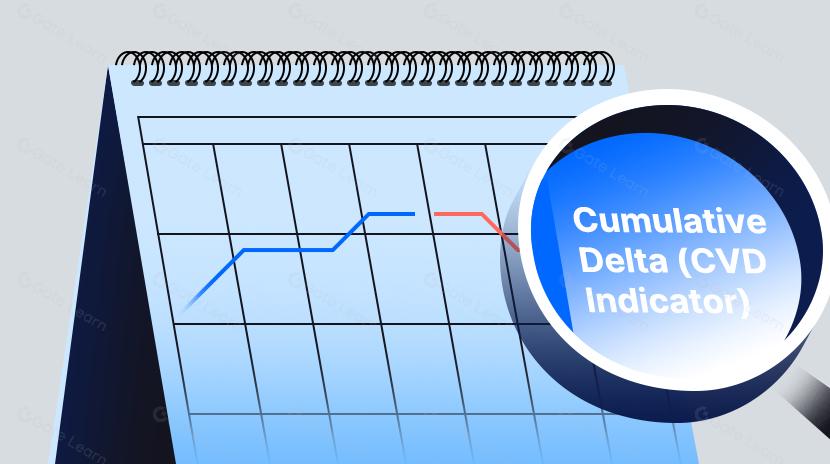Токенизированные акции США: игровой изменения для следующего бычьего рынка или просто старое вино в новой бутылке?
Пересылка оригинального заголовка «За токенизированными акциями США: горячий повествователь, но холодный рынок - сможет ли старое вино в новой бутылке подогреть вторую волну бычьего рынка?»
С учетом продолжительного спада на рынке, может ли токенизация акций - старая концепция в новом формате - служить следующим важным повествованием для формирования дна рынка?
Недавно токенизация американских акций стала горячей темой, несмотря на общее падение рынка.
8 марта швейцарский эмитент токенизации Backed запустил wbCOIN, токенизированную версию акций Coinbase, на блокчейне Base. Пользователи могут торговать им против USDC на CoWSwap, с Backed, утверждающим соотношение 1:1 к стоимости акций $COIN и правовую обязательность. В то время как Backed прояснил, что у него нет официальных связей с Coinbase, этот шаг вызвал обсуждения в сообществе: находится ли токенизация акций на пороге нового цикла роста? И в этих медленных рыночных условиях может ли токенизация акций послужить новым повествованием для восстановления доверия?
Горячий рассказ, холодный рынок: Резкий контраст в токенизированных американских акциях
С возвращением к власти прокриптового администрирования Трампа ожидается, что правовая борьба между SEC и Coinbase утихнет. В начале 2025 года лидер протокола Base Джесси Поллак упомянул на X, что Coinbase исследует возможность токенизации акций $COIN на Base для пользователей из США. Однако запуск этой услуги в полностью соблюдаемой форме займет время.
Тем временем Backed стремительно продвигается вперед. Основанная в 2021 году, Backed получила раннее финансирование от Gnosis и Semantic и в основном ориентирована на глобальные рынки, согласно ее официальным материалам. Ее токенизированные активы соответствуют рамочному директиву MiFID II в соответствии с европейскими регуляциями и имеют утвержденный проспект в соответствии с европейским законодательством.
Однако wbCOIN не является первым токенизированным акционерным капиталом Backed. В июле 2024 года он заключил партнерство с INX для запуска токенизированной версии акций NVIDIA (BNVDA). Кроме того, компания выпустила токенизированные активы для S&P 500, Tesla и других акций. Однако на момент их запуска рыночное внимание не сосредотачивалось на токенизации ценных бумаг. Сегодня на рынке крайне необходимо убедительное повествование для восстановления уверенности.
Тем не менее, прохладное отношение не вызвано только ограниченным доступом Backed на американский рынок или более широким спадом рынка. Хотя тема вызвала интерес, торговая активность оказалась неудовлетворительной. К 11 марта TVL wbCOIN составлял $4,42 млн, но ежедневный объем торгов на Aerodrome составил всего $3 352 — меньше, чем у некоторых недавно запущенных мем-монет.

Этот медленный рост не вызван только недавним запуском wbCOIN - другая ранее токенизированная акция, BNVDA, увидела всего $113 торгового объема, столкнувшись с тем же отсутствием интереса.

Несмотря на возбуждение вокруг концепции, рынок токенизированных акций США находится на заре своего развития, имея ограниченный масштаб и ликвидность. Возможно, токенизированная акция, поддержанная Coinbase, могла бы стимулировать более широкое принятие.
Токенизированные акции: старая концепция, где соблюдение законов - ключевое препятствие
Однажды доминировавшая биржа FTX также предлагала торговлю токенизированными акциями с 2020 по 2022 год, включая акции Tesla, GameStop и другие. Однако крушение FTX в 2022 году внезапно положило конец этому сервису. Впоследствии появились слухи, сомневающиеся в том, что FTX полностью обеспечила свои токенизированные акции соответствующими акциями, что еще больше подорвало доверие к токенизированным акциям, выпущенным биржей.
В 2021 году Binance также попытался ввести токенизированные акционерные продукты для Tesla, Coinbase, Apple и других, позволяя пользователям покупать доли. Однако глобальные регуляторы быстро приняли меры. В течение нескольких недель после запуска финансовые регуляторы Великобритании и Германии выдали предупреждения о том, что эти продукты могут нарушать законы о ценных бумагах. Менее чем через три месяца Binance объявила о снятии с продажи всех токенизированных акций.
Кроме того, Bittrex Global, биржа, которая когда-то была известна предложением торговли токенизированными акциями, в конечном итоге закрыла свою платформу и подала заявление о банкротстве из-за растущего регуляторного давления и судебного иска от SEC.
Эти случаи подчеркивают, что регуляторные преграды были основной причиной неудачи токенизированных акций, выпущенных биржей, в предыдущем цикле. Теперь, когда рынок вновь рассматривает этот концепт, несколько факторов изменились:
- С учетом большей поддержки криптовалюты со стороны администрации Трампа, напряженность между криптоиндустрией и регуляторами снизилась.
- В слабом рынке растет потребность в рассказах, подтвержденных реальной ценностью.
- Соблюдение законов и технологии достигли зрелости. По сравнению с предыдущей эрой неограниченного роста, современный криптовалютный ландшафт приоритетно рассматривает регулятивные рамки и технические меры безопасности. Например, Backed обеспечивает, чтобы каждая токенизированная акция выпускалась на основе утвержденного ЕС проспекта, который четко определяет права владельцев на базовые акции. На технической стороне, улучшения в оракулах и инфраструктуре блокчейна значительно улучшили надежность.
Крошечная доля против ожиданий на триллионы долларов: Реальность токенизированных акций
Несмотря на впечатляющие темпы роста, фактический размер рынка токенизированных акций остается далеко от институциональных прогнозов. Фундаментально, будь то токенизированные акции США или другие ценные бумаги, все они попадают под категорию активов реального мира (RWA). Однако токенизированные акции занимают уникальное положение — как криптовалюты, так и акции США являются высоковолатильными и ликвидными финансовыми активами, но обширный объем торговли, глубокие капиталовложения и сильные фундаментальные показатели акций США делают их чрезвычайно желанными в крипто-пространстве.
Ожидания индустрии относительно токенизации акций чрезвычайно оптимистичны. Некоторые крупные институты предсказывают, что к 2030 году рынок токенизированных активов может достичь десятков триллионов долларов. Например, Boston Consulting Group (BCG) оценивает, что к тому времени глобальный рынок токенизированных активов может достичь 16 триллионов долларов. Отчет Security Token Market еще более амбициозен: он прогнозирует до 30 триллионов долларов в токенизированных активах, что обусловлено в первую очередь акциями, недвижимостью, облигациями и золотом.
Однако на 11 марта общая стоимость активов RWA on-chain составляет примерно 17,8 миллиарда долларов, при этом токенизированные акции составляют всего 15,43 миллиона долларов — менее 0,1% от общей суммы. Ежемесячный объем торгов составляет всего 18 миллионов долларов. Очевидно, токенизация акций остается недоразвитым сегментом в рамках более широкого пространства RWA.

Тем не менее, токенизированные акции проявили стойкость и сильный ростовой импульс. В июле 2024 года общая ценность токенизированных акций составляла около 50 миллионов долларов. Это означает, что рынок утроился всего за шесть месяцев - темп роста, значительно превосходящий тот, что характерен для большинства альткоинов.
Более того, недавний спад на рынке подчеркнул относительную стабильность токенизированных акций. Биткоин упал ниже отметки в $80 тыс., и общая капитализация криптовалют вернулась к уровням начала 2024 года, с падением на 30% за последние три месяца. В отличие от этого, токенизированные акции удерживались близко к историческим максимумам. Это говорит о том, что более широкий рынок акций США менее подвержен крайней волатильности отдельных активов, что делает токенизированные акции потенциальным хеджем в портфелях криптовалют.
Для инвесторов сегодня токенизированные акции США не являются спасателем от медвежьего рынка и не мимолетным трендом. Вместо этого они напоминают семечко, ждущее своего прорастания, которое зависит от тонкого баланса регулирования, технологий и рыночного настроения. Вырастет ли оно в могучее дерево, может зависеть от следующего шага SEC, регуляторной стратегии Coinbase или капиталовложений следующего бычьего цикла. Единственное, что можно сказать наверняка? Этот эксперимент далеко не завершен.
Отказ от ответственности:
- Эта статья перепечатана с [PANews]. Передать оригинальный заголовок «За токенизированными акциями США: горячий нарратив, но холодный рынок — сможет ли старое в новой упаковке подогреть вторую волну бычьего рынка?». Авторские права принадлежат оригинальному автору [Фрэнк]. Если у вас есть возражения против перепечатки, пожалуйста, свяжитесь Gate Learnкоманда, команда обработает это как можно скорее согласно соответствующим процедурам.
- Отказ от ответственности: Мнения и взгляды, выраженные в этой статье, представляют собой только личные взгляды автора и не являются инвестиционными советами.
- Команда Gate Learn переводит другие языковые версии статьи и не упоминается в Gate.com, переведенная статья не может быть воспроизведена, распространена или использована в качестве плагиата.
Похожие статьи

Что такое Tronscan и как вы можете использовать его в 2025 году?

Что такое индикатор кумулятивного объема дельты (CVD)? (2025)

Что такое Нейро? Все, что вам нужно знать о NEIROETH в 2025 году

Что такое Solscan и как его использовать? (Обновление 2025 года)

15 криптовалютных проектов уровня 1 (L1), на которые стоит обратить внимание в 2024 году


